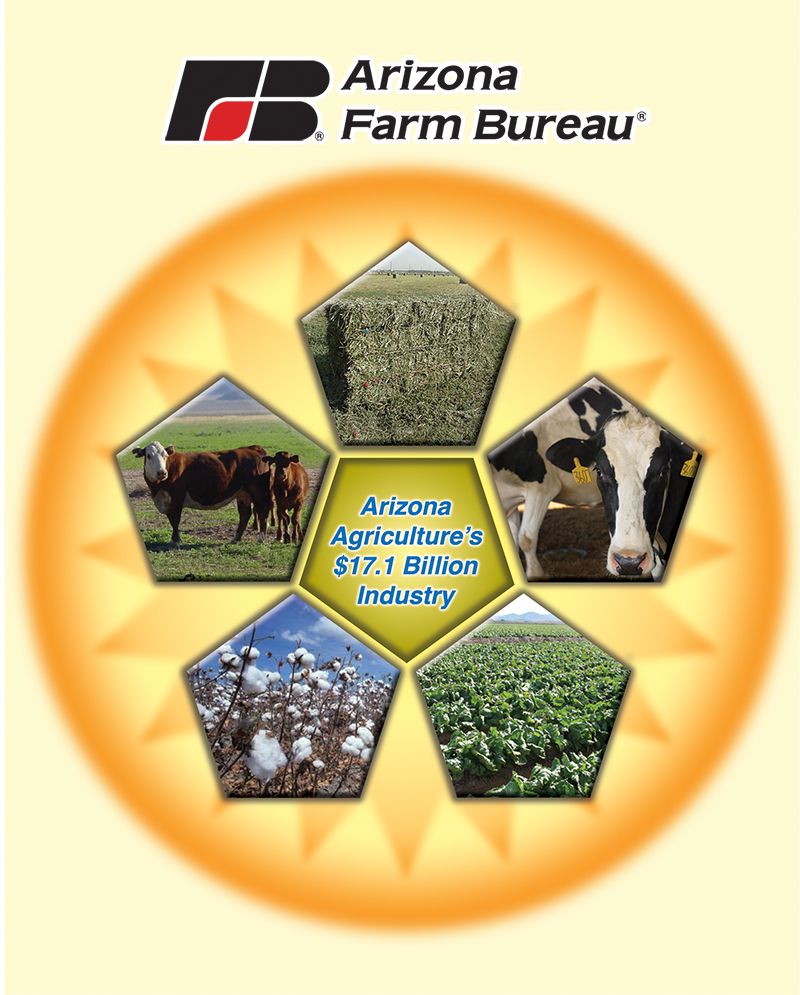The Farm Bill Provides a Safety Net to Farmers and Ranchers during Tough Times
Author
Published
10/18/2017
Second in a series on the Farm Bill. First: The Farm Bill is a Food Bill to Thousands of Arizonans
According to the United States Department of Agriculture’s (USDA) National Agricultural Statistics Service (NASS), Arizona boasts 19,600 farms that cover 25,900,000 acres. In 2015, sales of farm and ranch products contributed $4.4 billion to our economy. The overall contribution from Arizona agriculture to our state is more than $17 billion (a new number on this will come out next month).
While these numbers make us feel good, and Arizona agriculture is considered a top ties industry in our state, we need the protection of the farm bill. Here’s another reason why: The farm bill provides a safety net to farmers and ranchers during tough times.
The farm bill touches everyone in Arizona in numerous ways. It is targeted to farmers and ranchers, used to support infrastructure and economic development in rural communities, incentivizes maintenance of good conservation practices and helps provide access to food for those less fortunate and breakfasts and lunches for school children.

Safety Net Specifics for Arizona
· From 2009 to 2015, USDA invested more than $787 million in Arizona for programs that provide access to credit, support a strong farm safety net, and promote new markets for farm and ranch products.
· In 2016, Arizona farmers and ranchers received:
o $69,071 in Agriculture Risk Coverage (ARC) and Price Loss Coverage (PLC) programs that provide revenue and price loss payments to eligible producers;
o $46,095,230 in commodity loans to eligible producers who use their crops as collateral;
o $8,412,066 in Cotton Ginning Cost-Share Program payments to provide cost-share assistance payments to cotton producers;
o $3,106,386 in Loan Deficiency Payments to help producers who agree to forgo a commodity loan in return for a payment on the eligible commodity.
“Because of low commodity prices, many of America’s farmers and ranchers are struggling,” said American Farm Bureau Federation (AFBF) President Zippy Duvall. “The risk management and safety net provisions of farm bills are most important in times like these.
“The bill also will help protect our nation’s food security and our supply of domestic renewable energy and fiber,” Duvall also said. “It will provide critical food assistance to those who need it, and it will continue to offer incentives to conserve our natural resources. Farm Bureau stands ready to work with the House and Senate ag committees to ensure the next farm bill works for farmers, ranchers and all Americans.”
Farm Bureau’s goals for the next farm bill are to:
· Protect current farm bill spending;
· Maintain a unified farm bill that includes nutrition programs and farm programs together;
· Ensure any changes to current farm legislation be an amendment to the Agricultural Adjustment Act of 1938 or the Agricultural Act of 1949;
· Prioritize our top funding concerns (risk management tools, which include both federal crop insurance and Title I commodity programs); and
· Ensure programs are compliant with World Trade Organization agreements.
“I’ve always looked at the farm bill as America’s safety net,” explains Arizona Farm Bureau President Kevin Rogers. “The benefit to keeping food and fiber produced in this country is priceless. We must be able to feed ourselves knowing that any other country that feeds us controls us. The farm bill is a must have; we must always improve our ability to provide for our nation.”
Join Our Family